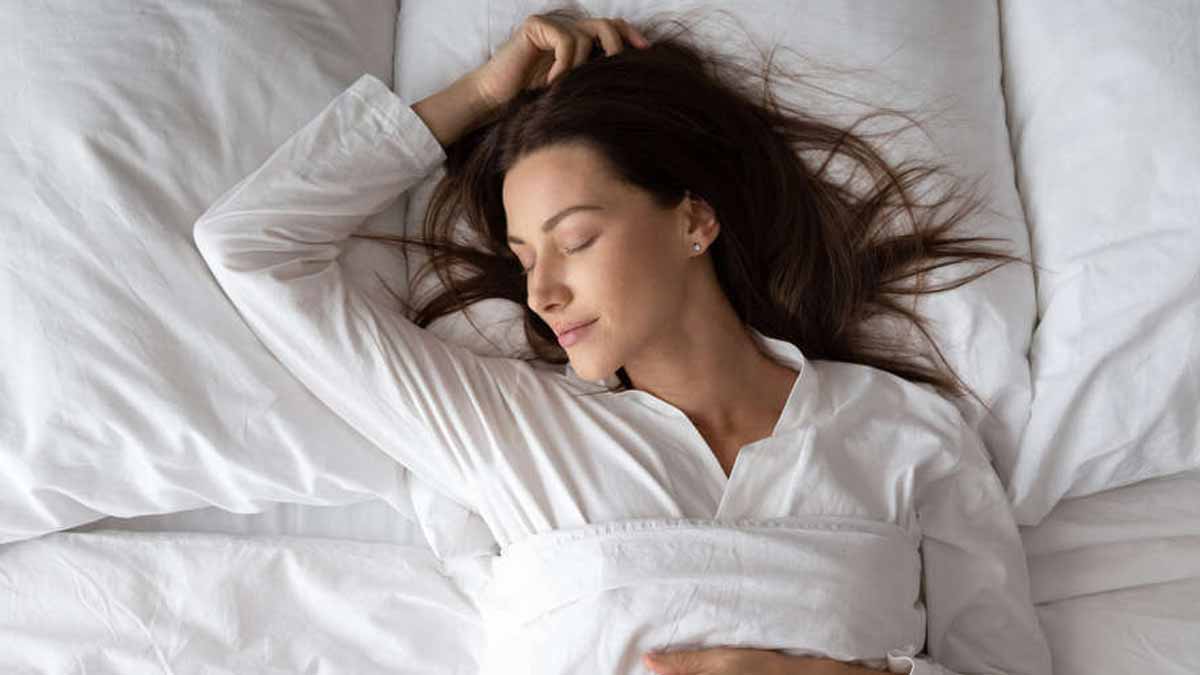Finding the right rhythm to improve the quality of your nights is often simpler than it seems. While many methods promise better rest, science shows that not all movements have the same impact on sleep. Researchers have compared several approaches, and one stands out for its remarkable effectiveness. Practiced with regularity, it offers results that quickly transform evenings into a calmer experience. Among the many options available, this exercise proves to be the most powerful ally for peaceful nights.
What the meta-analysis really shows
Thirty randomized trials, drawn from more than a dozen countries, analyzed how structured movement improves sleep in people with disturbances. Researchers pooled data from over 2,500 participants and compared several modalities using common sleep outcomes. The broad result is reassuring, since movement helps most groups, while specific choices refine the benefit.
High-intensity yoga stands out when practiced under thirty minutes, twice a week. The effect surpasses walking, resistance work, blended programs, aerobic sessions, and traditional Chinese practices. Gains appear after eight to ten weeks, which feels manageable and budget-friendly, so adherence becomes easier for busy people.
The analysis does not claim a cure-all. Methods differ, protocols vary, and populations are diverse. Researchers urge caution because study counts remain limited for some modalities. Still, the overall direction holds. Add exercise carefully, and match dose to life constraints, then let results shape your next step.
How exercise interacts with sleep biology
Yoga’s edge may come from combining muscle effort with controlled breathing. Structured breath can activate the parasympathetic system, which calms the body and sets the stage for deeper, steadier sleep cycles. Because breath links posture to rhythm, the mind settles while the heart rate gradually adapts.
Some studies suggest shifts in brainwave patterns during and after sessions. These shifts may promote slow-wave sleep, which restores energy and improves next-day mood. While mechanisms need clearer mapping, the dual action on body and breath creates a practical bridge between tension and rest that people can maintain.
Intensity matters. Shorter, focused sessions reduce barriers and keep fatigue from spilling into bedtime. Because technique affects load, styles like vinyasa or power formats feel aerobic at times, while others lean restorative. This flexibility helps people choose sustainable routines that respect injuries, preferences, and shifting schedules.
From mat to mattress: practical takeaways
Start twice weekly, under thirty minutes, and protect the schedule like a meeting. Because change compounds, small wins gather across weeks. Keep the final hour before bed calm, and avoid screens while you ease into a quieter state. Track how you feel the next morning rather than only at night.
If you dislike mats, walk briskly. Walking ranked next after yoga in the analysis and suits most environments. Add mild hills or stairs for a gentle lift without strain. Then test resistance training, which follows walking in effectiveness. Rotate these options so motivation stays fresh while results remain steady.
Personalization beats perfection. Keep one variable stable, such as timing, and adjust the rest. Add one exercise cue, like a playlist, to trigger the habit. Because progress shows up after eight to ten weeks, set a calendar reminder for a check-in, then adjust intensity or style while you maintain frequency.
Where exercise outranks or complements other options
Walking helps when you want low friction, quick setup, and a clear route. It lowers mental load, which reduces dropout risk. Resistance circuits support posture and joint stability, and they pair well with short breath practices. Together, they form a simple plan for people who avoid group classes.
The 2023 meta-analysis suggested mid-intensity aerobic work three times weekly as a strong approach. That finding still matters, yet it can live alongside current results because yoga straddles aerobic and anaerobic territory. Because studies define intensity differently, categories sometimes blur, so outcomes shift when protocols change.
Think in layers. Keep your primary modality, then add a breath block or a balance flow. If motivation dips, swap order rather than quitting. Because sleep improves through routine, consistency outranks novelty. Use social support, gentle accountability, and small rewards to protect the habit without forcing it.
Limits, gaps, and what to watch next
Study quality varies, and many trials remain small. Populations differ by age, baseline insomnia type, and comorbid conditions, which complicates direct comparisons. Researchers caution against sweeping claims. Treat the findings as a strong signal, not a final verdict, while larger, longer head-to-head trials arrive.
Measurement tools also differ. Some papers rely on questionnaires, while others add wearables or lab measures. Because methods shape results, expect updates as protocols align. The current picture still guides action: keep sessions short, track outcomes you care about, then adjust the mix while you protect recovery.
Choice remains personal. Bodies respond differently, and no solution fits everyone. Use walking for easy wins, add resistance for structure, and keep yoga for breath-driven calm. Insert one exercise habit into your week, then build outward. Steady practice, not complexity, turns better nights into your new normal.
Why making one small change today can reshape your sleep for months
Better nights grow from consistent effort, not heroic plans. The evidence points to short, structured sessions that respect time and energy. While mechanisms evolve with research, your routine can start now and adapt later. Keep patience high, track progress weekly, and let exercise become the quiet engine of your recovery.
